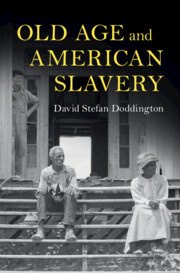Introduction
Old Age and American Slavery
Published online by Cambridge University Press: 27 October 2023
Summary
The Introduction sets out the historiographical and theoretical grounding for this study on old age in slavery, and provide information on the demographic conditions of slavery appertaining to old age. This book challenges narratives of solidarity between enslaved people and their elders, and shows how far age affected the performance of mastery and shaped white southerners’ interactions with one another. In examining how individuals, families, and communities felt about the aging process and dealt with elders, it emphasizes the complex social relations that developed in a slave society. Showing how old age ran through the arguments of Black activists, abolitionists, proslavery propagandists, and enslavers, the book reveals how representations – and the realities of aging – spoke to wider debates on the politics of paternalism and resistance. Ultimately, by illuminating age as a crucial aspect of the complex web of relations that bound together enslavers and enslaved, the book asks readers to rethink existing narratives relating to networks of solidarity in the American South and emphasizes the all-encompassing violence and exploitation of American slavery.
Keywords
- Type
- Chapter
- Information
- Old Age and American Slavery , pp. 1 - 30Publisher: Cambridge University PressPrint publication year: 2023

